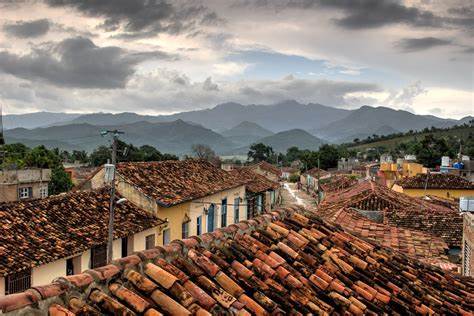LA MÚSICA POPULAR CUBANA EN LOS AÑOS 1980s y 1990s. PHOTOS. VIDEOS.
La Nueva Trova, el movimiento de la música cubana con raíces en la Trova tradicional, tan popular en sus inicios, recibió un fuerte golpe con la caída de la Unión Soviética, aunque su decadencia ya se sentía desde años anteriores. El movimiento sufrió dentro de Cuba, quizás por el creciente desencanto con el gobierno de un solo partido, y externamente por el vívido contraste con las grabaciones y películas de Buena Vista Social Club. Las audiencias alrededor del mundo abrieron sus ojos al encanto y la alta calidad musical de formas más antiguas de la música cubana. El distinguido musicólogo Díaz Ayala seleccionó dos canciones de la Nueva Trova para su lista de las más destacadas “50 canciones cubanas en el repertorio popular internacional”, ellas fueron “Unicornio Azul” de Silvio Rodríguez y “Yolanda” de Pablo Milanés.
VIDEOS- Pablo Milanes en “Yolanda”…
LA MUSICA CUBANA DE LOS AÑOS OCHENTA Y NOVENTA…
El Son continuó siendo la base de las formas más populares de la música cubana moderna, representado por agrupaciones tales como el Septeto Nacional, el cual fue reinstaurado en 1985, la Orquesta Aragón, la Orquesta Ritmo Oriental y la Orquesta Original de Manzanillo. El grupo Sierra Maestra es famoso por haber iniciado una revitalización del Son tradicional durante los años ochenta. La Nueva Trova todavía goza de cierta influencia, pero los temas abiertamente políticos de los sesenta ya han pasado de moda.
Mientras tanto, Irakere fusionó la música tradicional cubana con elementos de Jazz, y grupos como NG La Banda, Orishas y Son 14 continuaron añadiendo nuevos elementos al Son, especialmente hip hop y funk, para crear la Timba, proceso que fue estimulado por la adquisición de equipo electrónico importado.
En los años noventa, un incremento del interés por la World music coincidió con el “periodo especial” de la era post-soviética en Cuba, durante el cual la economía comenzó a abrirse al turismo internacional. La Orquesta Aragón, la Charanga Habanera y Cándido Fabré y su Banda fueron antiguos participantes en la escena de la charanga, y contribuyeron a la creación del popular ambiente de la Timba durante los años noventa. El premio más importante de la música cubana fue el “Premio Benny Moré”.
TIMBA EN LA MUSICA POPULAR CUBANA…
En casi todos sus aspectos la Timba coincide con la Salsa cubana, aunque algunos plantean que es algo más que eso. Desde los años noventa, la palabra Timba fue usada para denominar a la música popular bailable en Cuba, solamente rivalizada por el Reguetón. Aunque derivada de las mismas raíces que la Salsa, la Timba posee sus propias características, estando íntimamente ligada al ambiente cultural de Cuba y particularmente de La Habana.
AL contrario de la Salsa , cuyo surgimiento está directamente relacionado con el Son cubano y a los “conjuntos” de los años cuarenta y cincuenta, la Timba está compuesta por una síntesis de elementos estilísticos, los cuales incluyen a la Rumba, el Guaguancó, la música de los tambores Batá, las canciones sagradas de la Santería), y otras Fuentes populares como el Rock, el Jazz, el Funk y la música folklórica puertorriqueña. Su gran popularidad en Cuba, su novedad y originalidad como estilo musical, la habilidad de sus ejecutantes, su relación con las tradiciones locales y la cultura de la emigración afro-cubana, sus significados y su estilo, dejan entrever puntos de tensión dentro de la sociedad cubana.
En adición a los timbales, los percusionistas de la Timba utilizan la batería, como una manera de identificar su sonoridad en comparación con la de la Salsa. El uso del sintetizador es también común dentro de este estilo musical. Las canciones de Timba tienden a ser más innovadoras, experimentales y frecuentemente más virtuosísticas que las de la salsa. Las partes de los metales son usualmente más rápidas, influidas por el Bebop y a menudo alcanzan los extremos de la tesitura de los instrumentos.
RENACIMIENTO DEL SON CUBANO…
Varios proyectos lograron captar la atención internacional durante los años noventa, debido al renacimiento de estilos tradicionales como el son cubano de la era de los septetos y los conjuntos. El grupo Sierra Maestra fue uno de esos grupos. En 1995, Juan de Marcos González, director y Tresero del grupo Sierra Maestra, fue contactado por Nick Gold (president del sello musical World Circuit Records) con el propósito de grabar un álbum utilizando a músicos africanos. Al final, los africanos no pudieron viajar a La Habana, así que el proyecto de convirtió en cubano ciento por ciento, presentando a figuras tales como Compay Segundo, Ibrahim Ferrer, Omara Portuondo y Rubén González.
Para este proyecto se crearon dos grupos instrumentals que incluían al guitarrista estadounidense Ry Cooder, los cuales fueron: Buena Vista Social Club y Afro-Cuban All Stars, y ambos grupos grabaron sendas producciones llamadas: Buena Vista Social Club y “A toda Cuba le gusta”, en marzo de 1996. El lanzamiento del primero en septiembre de 1997 fue un verdadero éxito. El álbum se convirtió en un hit global, vendiendo millones de copias y convirtiendo a sus intérpretes en reconocidas figuras internacionales.
VIDEOS- Afro-Cubans del Album “A toda Cuba…”
Buena Vista dio como resultado varias grabaciones subsecuentes y un filme con el mismo nombre del álbum, Buena Vista Social Club (documental), así como también estimuló un marcado interés en otras agrupaciones musicales cubanas.
La conclusión a la que muchos observadores llegan sobre este fenómeno es que la clausura de numerosos locales donde se tocaba música popular, y el absoluto control del estado sobre las actividades artísticas y los medios de comunicación, después de la Revolución cubana, dañó severamente el desarrollo y la promoción de la música popular cubana.
EL HIP-HOP CUBANO…
Después del colapso de la Unión Soviética, la economía cubana comenzó a declinar. El nivel de pobreza fue entonces más extendido y visible en Cuba. Durante los años noventa, algunos cubanos comenzaron a protestar por la situación mediante el Rap y el Hip hop. Los “raperos” se convirtieron en una verdadera “revolución dentro de la revolución”. En Cuba, el Hip hop ha sido utilizado para expresar las viciscitudes de la vida cotidiana, así como las aspiraciones del pueblo.
Durante el llamado Período especial después de la desaparición de la Unión Soviética, el gobierno cubano se vio obligado a tomar medidas para garantizar la supervivencia del Statu quo implantado por la Revolución cubana. En aquel momento el turismo fue discretamente estimulado, y los locales habaneros donde se ofrecían espectáculos musicales comenzaron a atraer tanto a los habitantes locales como a los visitantes. Antes de esa etapa, los turistas eran una rareza en Cuba. Cuando el Hip hop comenzó a emerger, el gobierno se opuso a la imagen relativamente vulgar que estos proyectaban, pero hacia finales de los años noventa aceptaron que era más conveniente permitir el desarrollo del movimiento rapero bajo el control y la influencia del oficialista Ministerio de Cultura, como una “auténtica expresión de la cultura cubana”.
Que el Hip hop haya sido tolerado por el gobierno de Cuba es algo fuera de lo ordinario, debido a que el propio gobierno proporciona a los intérpretes de Rap equipos de sonido y locales apropiados para su presentación. Miembros del ambiente del Rap y el Hip hop cubano solicitaron espontáneamente la participación del Ministerio de Cultura en sus actividades, y de esa manera aseguraron la supervivencia y el desarrollo del movimiento, poniéndolo al servicio de los lineamientos del gobierno. Gracias a esa actitud servil, los cultivadores del Rap recibieron en el 2002 un sello disquero, una publicación periódica y un festival de Hip hop a través de la llamada “Agencia cubana de Rap” (Cuban Rap Agency).
Bajo esas condiciones, el gobierno cubano le brindó a los grupos de Rap y Hip hop difusión a través de los medios de comunicación oficiales, a cambio de una auto-limitación en sus expresiones y de la presentación de una imagen positiva del gobierno revolucionario. Este 2019 por la isla aspiraron al gramófono dorado (Grammy) un excelente exponente del Hip hop de Cuba,el grupo Orishas, que con su disco Gourmet (Sony Music Latin, 2018) compite en el apartado Mejor Álbum de Rock Latino, Urbano o Alternativo.
THE CUBAN POPULAR MUSIC of the 1980s and 1990s. PHOTOS. VIDEOS.
NUEVA TROVA, the Cuban music movement rooted in traditional Trova, so popular in its beginnings, received a heavy blow with the fall of the Soviet Union, although its decline had already been felt for years. The movement suffered within Cuba, perhaps from growing disenchantment with one-party rule, and externally from the vivid contrast with the Buena Vista Social Club recordings and films. Audiences around the world opened their eyes to the charm and high musical quality of older forms of Cuban music. Cristóbal Díaz Ayala selected two Nueva Trova songs for his list of the most outstanding “50 Cuban songs in the international popular repertoire”, they were “Unicornio Azul” by Silvio Rodríguez and “Yolanda” by Pablo Milanés.
THE MUSIC OF THE 1980s AND 1990s…
The Son continued to be the basis for the most popular forms of modern Cuban music, represented by groups such as the Septeto Nacional, which was reinstated in 1985, the Orquesta Aragón, the Orquesta Ritmo Oriental, and the Original Orchestra of Manzanillo. The Sierra Maestra group is famous for having initiated a revitalization of traditional Son during the 1980s. Nueva Trova still enjoys some influence, but the overtly political themes of the 1960s are out of fashion.
Meanwhile, Irakere fused traditional Cuban music with elements of Jazz, and groups such as NG La Banda, Orishas, and Son 14 continued to add new elements to Son, especially hip hop and funk, to create Timba, a process that was stimulated by the acquisition of imported electronic equipment.
In the 1990s, an increase in interest in world music coincided with the “special period” of the post-Soviet era in Cuba, during which the economy began to open up to international tourism. The Orquesta Aragón, the Charanga Habanera, and Cándido Fabré and his band were former participants in the charanga scene and contributed to the creation of the popular Timba scene during the 1990s. The most important award for Cuban music was the “Benny Moré Award”.
VIDEOS- Grupo Sierra Maestra “Son para ti”..
TIMBA IN CUBAN POPULAR MUSIC…
In almost all its aspects, Timba coincides with Cuban Salsa, although some argue that it is something more than that. Since the 1990s, the word Timba has been used to describe popular dance music in Cuba, rivaled only by Reggaeton. Although derived from the same roots as Salsa, Timba has its own characteristics, being intimately linked to the cultural environment of Cuba and particularly in Havana.
Contrary to Salsa, whose emergence is directly related to the Cuban Son and the “conjuncts” of the 1940s and 1950s, Timba is composed of a synthesis of stylistic elements, which include Rumba, Guaguancó, music of the Batá drums, the sacred songs of Santería), and other popular sources such as Rock, Jazz, Funk, and Puerto Rican folk music. Its great popularity in Cuba, its novelty and originality as a musical style, the skill of its performers, its relationship with local traditions and the culture of Afro-Cuban emigration, its meanings, and its style, reveal points of tension within the Cuban society.
In addition to the timbales, Timba percussionists use drums as a way to identify their sonority compared to that Salsa. The use of the synthesizer is also common within this musical style. Timba songs tend to be more innovative, experimental, and often more virtuoso than salsa songs. The brass parts are usually faster, influenced by Bebop, and often reach the extremes of the instrument’s range.
RENAISSANCE OF THE CUBAN SON…
Several projects managed to gain international attention during the 1990s, due to the revival of traditional styles such as the Cuban son from the era of septets and ensembles. The Sierra Maestra group was one of those groups. In 1995, Juan de Marcos González, director, and Tresero of the Sierra Maestra group was contacted by Nick Gold (president of the music label World Circuit Records) with the purpose of recording an album using African musicians. In the end, the Africans couldn’t travel to Havana, so the project became 100 percent Cuban, featuring such figures as Compay Segundo, Ibrahim Ferrer, Omara Portuondo, and Rubén González.
For this project, two instrumental groups were created that included the American guitarist Ry Cooder, which were: Buena Vista Social Club and Afro-Cuban All Stars, and both groups recorded two productions called: Buena Vista Social Club and “All Cuba likes ”, in March 1996. The launch of the first in September 1997 was a real success. The album became a global hit, selling millions of copies and turning its performers into renowned international figures.
Buena Vista resulted in several subsequent recordings and a film with the same name as the album, Buena Vista Social Club (documentary), as well as stimulated a marked interest in other Cuban musical groups.
The conclusion that many observers reach about this phenomenon is that the closure of many places where popular music was played, and the absolute control of the state over artistic activities and the media, after the Cuban Revolution, severely damaged the development and the promotion of Cuban popular music.
CUBAN HIP-HOP…
After the collapse of the Soviet Union, the Cuban economy began to decline. The level of poverty was then more widespread and visible in Cuba. During the nineties, some Cubans began to protest the situation through Rap and Hip Hop. The “rappers” became a true “revolution within the revolution”. In Cuba, hip hop has been used to express the vicissitudes of daily life, as well as the aspirations of the people.
During the so-called Special Period after the disappearance of the Soviet Union, the Cuban government was forced to take measures to guarantee the survival of the Status quo established by the Cuban Revolution. At that time, tourism was discreetly stimulated, and the Havana venues where musical shows were offered began to attract both locals and visitors. Before that stage, tourists were a rarity in Cuba. When hip hop began to emerge, the government objected to the relatively vulgar image it projected, but towards the end of the 1990s they accepted that it was more convenient to allow the development of the rapper movement under the control and influence of the official Ministry of Culture, as an “authentic expression of Cuban culture”.
That Hip Hop has been tolerated by the Cuban government is something out of the ordinary, because the government itself provides Rap performers with sound equipment and appropriate venues for their presentation. Members of the Rap and Hip scene of Cuban hop spontaneously requested the participation of the Ministry of Culture in their activities, and thus ensured the survival and development of the movement, placing it at the service of government guidelines. Thanks to this servile attitude, the cultivators of Rap received 2002 a record label, a periodical publication, and a Hip Hop festival through the so-called “Cuban Rap Agency”.
Under these conditions, the Cuban government offered Rap and Hip Hop groups diffusion through the official media, in exchange for self-limitation in their expressions and the presentation of a positive image of the revolutionary government. This 2019 on the island, an excellent exponent of Cuban Hip Hop, the group Orishas, aspired to the golden gramophone (Grammy), which with its Gourmet album (Sony Music Latin, 2018) competes in the Best Latin Rock, Urban or Rock Album section.
Agencies/ Wiki/ MusicaCubanaHist./ Extractos/ Excerpts/ Internet Photos/ YouTube/ Arnoldo Varona/ www.TheCubanHistory.com
THE CUBAN HISTORY, HOLLYWOOD.



 LA MÚSICA POPULAR Cubana de los Años 1980s y 1990s. PHOTOS. VIDEOS. * THE CUBAN Popular Music of the 1980s and 1990s. PHOTOS. VIDEOS.
LA MÚSICA POPULAR Cubana de los Años 1980s y 1990s. PHOTOS. VIDEOS. * THE CUBAN Popular Music of the 1980s and 1990s. PHOTOS. VIDEOS.







